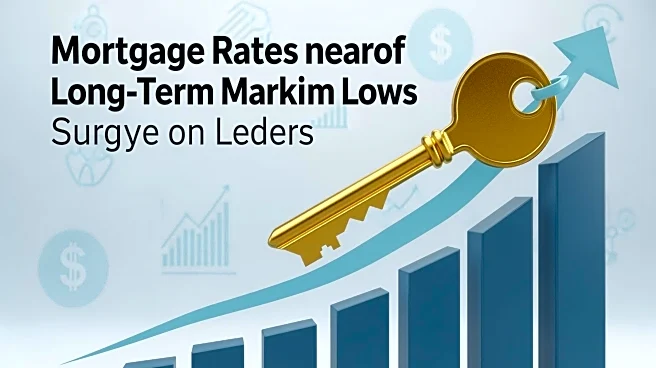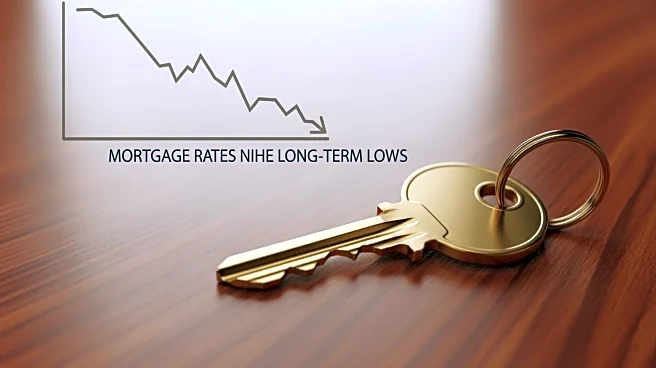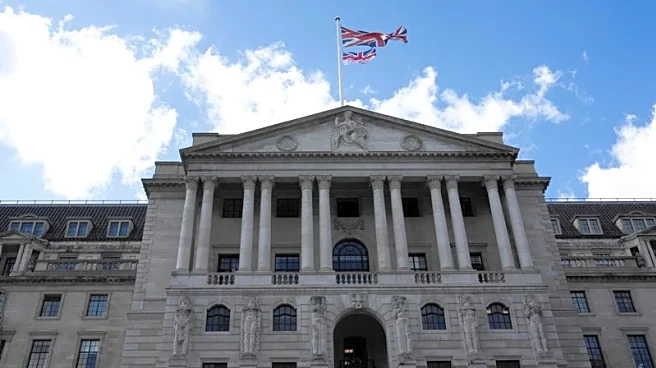What's Happening?
Mortgage rates have risen for the first time in eight months, with average rates on two- and five-year fixed plans increasing by 0.02% to 4.98% and 5.02%, respectively. This marks the first month-on-month
rate rise since February 2025. The number of available mortgage products has decreased to 6,998 options, although those looking to buy with a 5% or 10% deposit have the highest number of deals available in 17 years, totaling 1,362 options. The rise in rates is attributed to volatile swap rates, which lenders use to set borrowing rates. This volatility has led to a cautious approach among lenders, compounded by uncertainties surrounding interest rate forecasts and inflation expectations.
Why It's Important?
The increase in mortgage rates is significant for homeowners, particularly those looking to remortgage after a five-year fixed term. These individuals may face an additional cost of approximately £260 per month. Conversely, homeowners coming off a two-year fix could save around £200 per month due to lower average rates compared to two years ago. The rise in rates, along with potential higher taxes and tighter regulations, poses challenges for landlords, especially in the South, where new landlords are becoming scarce due to high stamp duty and stagnant property prices. The North East of England has emerged as a hotspot for buy-to-let owners, with 28.4% of homes sold in the region purchased by landlords.
What's Next?
Homeowners and landlords are likely to closely monitor upcoming economic policies and interest rate decisions, particularly the budget, which could influence future rate cuts. The Bank of England's stance on inflation and interest rates will be crucial in determining the trajectory of mortgage rates. Landlords may continue to shift investments to regions with more favorable conditions, such as the North East, while homeowners may seek cost-effective remortgage options to mitigate increased monthly payments.
Beyond the Headlines
The rise in mortgage rates highlights broader economic challenges, including inflationary pressures and regulatory changes affecting the housing market. The shift in landlord investments from the South to the North reflects regional disparities in property market dynamics, potentially influencing long-term housing availability and affordability. The cautious approach by lenders underscores the uncertainty in financial markets, which could have lasting implications for borrowing costs and housing market stability.













